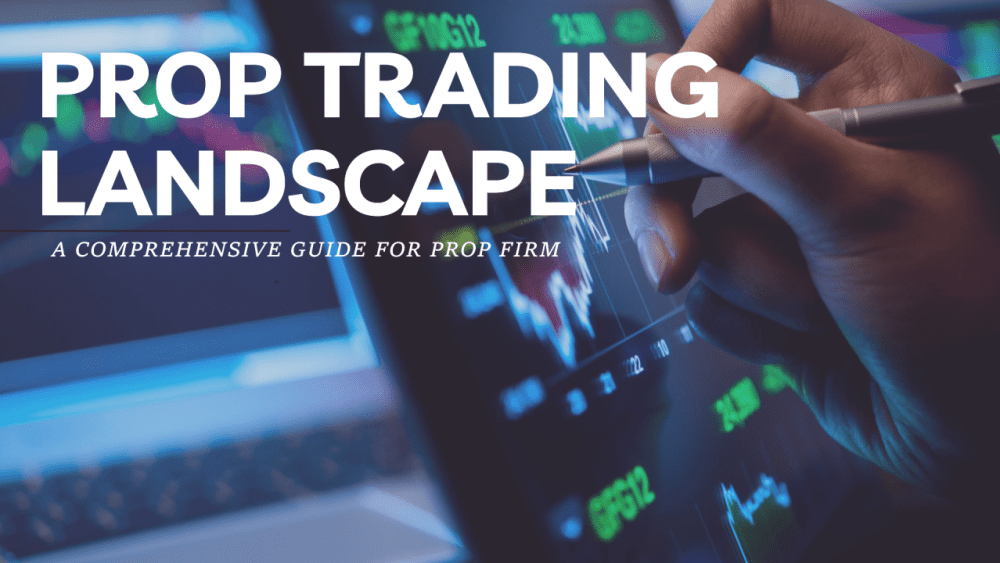Many adults are searching for reliable ways to generate extra income without risking a lot of money upfront. Prop trading, where individuals trade financial markets using a firm’s capital instead of their own, has quickly become an accessible choice for those looking to supplement their earnings. With the right approach, adults can build a steady side income through prop trading by leveraging the resources and funding provided by top firms, even with minimal personal capital.
Navigating the world of prop trading doesn’t have to be overwhelming. By selecting one of the best prop firms, traders can gain access to professional tools, guidance, and capital, making it easier to start building side income. Understanding the requirements and strategies tailored to individual strengths is key to consistency and risk management.
Key Takeaways
- Prop trading allows adults to earn side income with low personal capital.
- Choosing a reputable firm is crucial for support and funding.
- Structured strategies and discipline improve chances of consistent profit.
Understanding Prop Trading for Adult Side Income
Proprietary trading can allow adults to access larger pools of capital and new investment opportunities with little personal risk beyond upfront fees. By working with prop trading firms, individual investors can potentially generate side income while trading a variety of financial instruments in professional markets.
What Is Proprietary Trading?
Proprietary trading, or “prop trading,” refers to the practice where a trader uses a firm’s money to buy and sell financial instruments for profit. Unlike retail trading, traders do not use personal funds for each position.
Instead, prop traders operate with the firm’s capital and share a portion of the profits. This structure means adults interested in building a side income can leverage more significant buying power than they might on their own. Prop trading platforms often charge a monthly fee or require traders to pass an evaluation to access their capital. Many see this model as a way to limit personal financial exposure while still benefiting from skilled market participation.
How Prop Trading Firms Operate
Prop trading firms assess individual traders based on their past experience, risk management skills, and simulation performance. Once accepted, traders gain access to the firm’s funds and are expected to follow strict risk guidelines.
Firms often split profits with their traders using structured agreements. For example, profit splits may range from 50/50 to 80/20, depending on performance and tenure. Fees might apply, such as monthly seat fees or evaluation costs.
Financial Instruments and Market Access
Prop trading firms offer access to a broad range of financial instruments, such as futures, equities, forex, and sometimes options or commodities. This enables traders to select instruments that fit their expertise and preferred risk profiles.
Financial market access is typically extended across different exchanges and regions, increasing the breadth of potential trades. Retail investors working with these firms may find it easier to diversify strategies and explore global capital markets.
The opportunity to trade with minimal personal capital is a considerable advantage, particularly for adults seeking a reliable side income stream. Market access through a prop firm can also mean better trade execution and competitive commission structures compared to standard retail brokerages.
Strategies for Building a Side Income With Minimal Capital
Prop trading can provide adults with limited capital a way to trade larger positions and potentially earn additional income. Success depends on building a sound strategy, managing risk, and protecting against large losses as market conditions shift.
Developing a Profitable Trading Strategy
A disciplined trading strategy is essential for earning side income through prop trading. Profitable strategies require clearly defined rules for entering and exiting trades, including specific criteria based on technical indicators, price action, or economic reports.
Those with minimal capital may find success with low-risk, high-probability set-ups that emphasise small, consistent gains. Examples include momentum trading, breakout patterns, or mean reversion strategies. Backtesting and demo trading should be used to refine these strategies before risking capital.
Tracking results with a trading journal helps identify what works and what does not. Over time, a trader can adjust their approach and concentrate resources on strategies with a consistent edge. The ability to adapt is important as market conditions and volatility shift frequently.
Risk Management Techniques in Volatile Markets
Strong risk management is critical in prop trading, especially when market fluctuations are high. One core technique is sizing positions so that no single trade can cause a significant loss. Many firms and experienced traders limit risk to 1-2% of total trading capital per trade.
Other key techniques include using trailing stops and adjusting trade sizes according to overall market volatility. Monitoring average true range (ATR) or historical volatility can help gauge when to tighten risk controls. It’s also valuable to set maximum allowable daily or weekly loss limits to prevent emotional decisions during losing streaks.
Prop traders often face sudden price moves, so preparing for slippage and rapidly changing liquidity is crucial. Developing the discipline to follow predefined risk rules makes it more likely to sustain value creation over the long term.
Conclusion
Prop trading provides adults with a straightforward way to access trading capital without requiring large personal funds. The opportunity to trade with a firm’s money can help reduce personal risk and accelerate skill development.
Key steps include choosing a reputable firm, understanding trading rules, and sticking to a clear strategy. Many traders find the support and structure of prop firms useful for building a more stable side income. With discipline and consistent effort, prop trading can be a practical option for those looking to supplement their earnings.
Explore Textify’s AI membership
Need Data? Explore the world’s largest Charts database
Explore insights with Textify Analytics
